Text
Australia Student Visa Requirements
Everything you need to know about Australian Visas
The visa you need will depend on the type of study you want to do, and how long you want to stay in Australia. You can find out more about each type of visa on the Australian Government’s Department of Immigration and Border Protection (DIBP) website.

You apply online
You will need to create an account using DIBP’s online application system - ImmiAccount - to complete and submit your student visa application. You can also track the status of your visa through ImmiAccount once you have submitted it.
The information you need for your visa application will depend on your nationality and which course you’re studying. You will generally need:
Proof of enrolment (your Electronic Confirmation of Enrolment)
Your health insurance (Overseas Student Health Cover) policy details
Your Genuine Temporary Entrant (GTE) statement
Evidence of your English skills
A valid passport
Your visa application fee
If you are under 18 years of age, you will also need to provide additional documents such as parental consent.
You can get a full list of what’s needed for your visa application from your IDP adviser or by using the Document checklist tool on the DIBP website
You should submit your application no later than six weeks before your course starts, and no earlier than 12 weeks.
Making sure your visa remains valid
Once you get your visa, there are a number of things you need to do to ensure it remains valid, including:
Remain enrolled and maintain satisfactory course progress and attendance
Provide your Australian address to your institution so they can contact you (don’t forget to let them know if you move)
Continue to be able to financially support yourself while in Australia
Don’t breach the working conditions that apply to your visa
If you want to change your qualification level you will need to apply for a new student visa.
Source: https://www.idp.com/singapore/study-in-australia/australia-student-visa-requirements/
0 notes
Text
How Can I Apply for a Subclass 189 Visa Application?
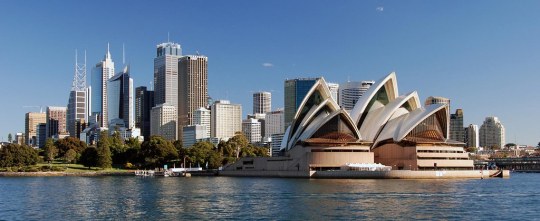
The dream of immigrating to Australia and obtaining permanent residency is a goal shared by many around the world. Australia's Subclass 189 Visa is one of the pathways that can lead you to this goal. This visa is designed for skilled workers who wish to live and work in Australia indefinitely. In this comprehensive guide, we will provide you with valuable tips and insights to help you navigate the Subclass 189 Visa application process successfully.
Understanding the Subclass 189 Visa
The Subclass 189 Visa is part of the Australian immigration program aimed at attracting highly skilled workers to contribute to the country's economy and society. This visa is a pathway to obtaining permanent residency in Australia, which, in turn, can lead to Australian citizenship. Here are some key points to keep in mind:
Skilled Immigration Australia: To be eligible for a Subclass 189 Visa, you must have skills and qualifications in an occupation listed on the Australian Skilled Occupation List (SOL). Before applying, ensure that your skills match one of the listed occupations.
Permanent Residency in Australia: This visa grants you and your family members permanent residency in Australia. This means you can live and work in Australia indefinitely and access healthcare and social services like any other Australian resident.
Pathway to Australian Citizenship: After holding a Subclass 189 Visa for a specific period, you may be eligible to apply for Australian citizenship. This offers you the opportunity to become a full-fledged Australian citizen.
Tips for a Successful Subclass 189 Visa Application
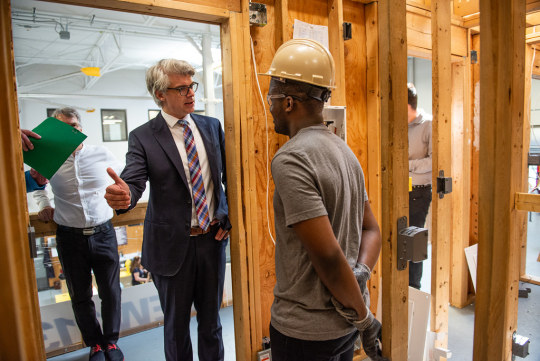
Research and Select the Right Occupation: Before starting your application, thoroughly research the Australian Skilled Occupation List to determine if your occupation is in demand. Ensure that your skills match the requirements for your chosen occupation. This is a critical step as your eligibility largely depends on this.
Assess Your Skills: You must undergo a skills assessment by a relevant assessing authority for your occupation. Make sure to provide accurate and complete documentation to support your skills assessment application. Any discrepancies or incomplete information can lead to delays or visa refusal.
Gather Required Documents: Compile all necessary documents, such as academic transcripts, work experience certificates, English language proficiency test results (e.g., IELTS or PTE), and a valid passport. Keep digital and hard copies organized for easy access during the application process.
Meet the Points Requirement: The Subclass 189 Visa application is points-based. To increase your chances of success, aim to score as high as possible on the points test. Points are awarded based on factors like age, English language proficiency, work experience, and education qualifications.
Submit a Complete Expression of Interest (EOI): You must submit an EOI through the Australian government's Skill Select system. Ensure all details are accurate, especially those related to your occupation and points score. Being truthful in your EOI is crucial for the success of your application.
Waiting for Invitation: Once your EOI is submitted, you must wait for an invitation to apply for the Subclass 189 Visa. Invitations are typically issued periodically, and the process can be competitive. Maintaining a high points score and ensuring your EOI is up to date can increase your chances of being invited.
Prepare a Strong Visa Application: After receiving an invitation, submit your visa application within the specified timeframe. Pay close attention to the information provided in the invitation, as it will include important details and documents required for the application.
Health and Character Requirements: Undergo medical examinations and provide police clearance certificates for all countries where you have lived for 12 months or more in the last 10 years. Meeting these health and character requirements is essential for visa approval.
Engage an Immigration Agent: Consider hiring a registered migration agent or immigration lawyer to assist you with the application process. They can provide valuable guidance, ensure your application is error-free, and help you navigate any complexities.
Stay Updated: Keep yourself informed about any changes in immigration policies or visa processing times. Staying updated will help you adapt your strategy if needed and prevent potential delays in your application.
Be Patient: The Subclass 189 Visa application process can be lengthy. Be prepared for waiting periods, and avoid unnecessary stress by staying patient and focused on the end goal.
Conclusion
Obtaining a Subclass 189 Visa is a significant step toward achieving your dream of permanent residency in Australia and, eventually, Australian citizenship. By following these tips and guidelines, you can increase your chances of a successful application. Remember that thorough research, attention to detail, and patience are key to navigating the Australian immigration system effectively. Your journey to a new life Down Under begins with the right steps, so start planning and working toward your goal today.
0 notes
Text
IRCC Invites More Candidates in Latest Express Entry Draw

Immigration Refugees and Citizenship Canada (IRCC) has invited more candidates in the latest Express Entry draw of 2023.
On August 15 the immigration department issued 4,300 invitations to apply (ITAs) to candidates in an all-program Express Entry draw. The minimum Comprehensive Ranking Score (CRS) was 496.
Overview of recent Express Entry results
August 2nd
On the 2nd of August, IRCC held a category-based draw inviting candidates with French proficiency from the Express Entry pool. The department issued 800 ITAs to those with a minimum CRS score of 435. This was the first targeted draw for French speakers since July 12th.
August 1st
IRCC held an all-program Express Entry draw on August 1st, inviting 2,000 candidates from all three programs encompassed within the Express Entry system (the Federal Skilled Worker Program (FSWP), the Federal Skilled Trades Program (FSTP), and the Canadian Experience Class (CEC). Candidates with a minimum CRS was 517 were invited.
July 11th-12th
IRCC issued 3,800 (ITAs) for permanent residency (PR) on July 12th, under a category-based selection draw for French-speaking candidates. Candidates required a minimum CRS score of 375 to be invited. This was the lowest draw CRS score of any draw in the last month.
July 11th marked another all-program Express Entry draw. IRCC issued 800 ITAs to candidates with a minimum CRS score of 505.
July 4th-7th
This period was one of the busiest in Express Entry’s history, with four consecutive draws occurring in this period—a first for the immigration system.
On July 7th, Canada held a targeted Express Entry draw for candidates with French language proficiency. 2,300 candidates with a minimum CRS score of 439 were given ITAs through this draw.
On July 6th, IRCC conducted its second category-based Express Entry draw for healthcare workers. The department invited 1,500 healthcare professionals in the Express Entry pool, who had a minimum CRS of 463.

On July 5th the immigration department held its first-ever targeted draw for Science, Technology, Electronics, and Mathematics (STEM) workers. This round saw 500 ITAs issued to STEM professionals with a minimum CRS of 486.
On July 4th IRCC invited 800 candidates to apply for PR, in an all-program Express Entry draw. The minimum CRS score for this draw was 511.
June 27th–28th
June 28th marked the very first targeted category-based draw in Express Entry’s history. IRCC invited 500 candidates with work experience in healthcare professions to apply for PR. The minimum CRS score for this draw was 476.
June 27th saw another all-program Express Entry draw. The immigration department invited 4,300 candidates from all three Express Entry programs, with a minimum CRS score of 486.
What is Express Entry?
Express Entry is an immigration application management system, that manages the Federal Skilled Worker Program (FSWP), Canadian Experience Class(CEC), and Federal Skilled Trades Program (FSTP). These three programs represent one of Canada’s most popular pathways for economic immigration into the country.
Candidates are assessed based on their human capital factors such as work experience, professional fields, language skills, education, and age. Based on these factors, a Comprehensive Ranking Score (CRS) assigns a score and ranks these candidates. Those with the highest scores after a draw’s given cut-off date, have a higher probability of receiving invitations to apply (ITAs).
IRCC recently announced a new set of selection criteria on May 31st, emphasising specific professional and demographic attributes of candidates over just their CRS score. This gave rise to six new categories for Express Entry candidates:
• Healthcare;
• STEM professions;
• Trades;
• Transport;
• Agriculture and agri-food; and
• French-language proficiency.
These categories aim to fill urgent job openings in the Canadian workforce and promote the use of the French language outside Quebec.
Source: CIC NEWS
0 notes
Text
The Impact of Australian Immigration Policies on the Country's Economy

Australian immigration has been a defining aspect of the country's history and continues to shape its present and future. With a rich multicultural heritage, Australia has long welcomed immigrants from all corners of the globe, contributing to its diverse society and vibrant economy. The Australian immigration system is known for its rigorous selection criteria, which prioritize skilled migrants who can meet the country's economic needs. This approach has proven successful in attracting professionals, entrepreneurs, and innovators who have made significant contributions to various sectors, fueling economic growth and fostering a culture of innovation.
Moreover, Australian immigration policies not only focus on economic factors but also place importance on family reunification and humanitarian considerations, exemplifying the nation's commitment to social cohesion and global responsibility. As a result, Australia has become a beacon of hope and opportunity for individuals seeking a better life, offering them a safe and inclusive environment to thrive and contribute to the nation's prosperity. Through its immigration policies, Australia continues to reap the benefits of a diverse and dynamic population, strengthening its economy, enriching its cultural tapestry, and positioning itself as a global leader in the face of a rapidly changing world.
To gain a comprehensive understanding of Australian immigration, click here.
Labor Market Dynamics: Meeting the Demand through Australian Immigration
One of the most notable impacts of Australian immigration policies is the influence on the labor market. Immigration has helped to address skill shortages and meet the demand for labor in various sectors. Skilled migrants bring valuable expertise and qualifications, filling gaps in the workforce and promoting economic productivity. By attracting highly skilled professionals, Australia benefits from increased innovation, knowledge transfer, and enhanced competitiveness in the global market.
Furthermore, the influx of immigrant workers has stimulated economic growth and boosted job creation, as many migrants start their businesses or contribute to the expansion of existing ones. This dynamic has led to a diverse and thriving entrepreneurial landscape, fostering economic dynamism and job opportunities for both migrants and native Australians.
Entrepreneurship and Innovation: The Influence of Australian Immigration Policies
Australian immigration policies have created an environment conducive to entrepreneurship and innovation. Many skilled migrants have launched successful startups, contributing to job creation, technological advancements, and economic diversification. These entrepreneurial ventures have fostered a culture of innovation, attracting investment and creating a positive ripple effect throughout the economy.
Moreover, the presence of multicultural and diverse communities has enriched Australia's cultural fabric and stimulated creativity and innovation. Different perspectives, ideas, and approaches brought by immigrants have led to the cross-pollination of knowledge and the emergence of novel solutions to societal challenges. This diversity has enhanced Australia's ability to adapt to a rapidly changing global economy, positioning the country as a hub for innovation and creativity.
Fiscal Impact: Assessing the Economic Effects of Australian Immigration

Australian immigration policies have had a mixed fiscal impact on the country. While immigrants contribute to the economy through taxes and consumption, there are also costs associated with providing public services and infrastructure to support the growing population. However, numerous studies have shown that, overall, immigration has had a positive effect on the fiscal balance. Immigrants often contribute more in taxes and social security contributions than they receive in public benefits, making them a net positive for the economy.
Additionally, immigration has helped counteract the challenges posed by an aging population and declining birth rates. The influx of working-age migrants has bolstered the labor force and helped sustain social welfare programs, such as pensions and healthcare, by increasing the number of taxpayers and reducing the burden on the native-born population.
Cultural Diversity: Enriching Australia's Social Fabric Through Immigration
Australia's immigration policies have transformed the country into a vibrant and multicultural society. The diverse range of cultures, languages, and traditions brought by immigrants has enriched Australia's social fabric, fostering tolerance, understanding, and cultural exchange. This diversity has not only enhanced social cohesion but has also been instrumental in expanding international trade networks and building diplomatic relationships with various countries.
Conclusion:
Australian immigration policies have had a profound impact on the country's economy. By attracting skilled migrants and entrepreneurs, Australia has experienced economic growth, increased competitiveness, and innovation. The labor market has benefited from the influx of talent, addressing skill shortages and creating job opportunities. While there are financial considerations associated with immigration, the overall fiscal impact has been positive, supporting the economy and social welfare programs. Moreover, the cultural diversity resulting from immigration has contributed to Australia's identity as a multicultural nation and has facilitated global connections. The success of Australia's immigration policies lies in striking a balance between attracting skilled migrants, supporting integration, and ensuring sustainable economic growth for the benefit of both migrants and the native population.
0 notes
Text
Facing Delay in Your Canada Immigration Application? Take These Steps

Canada's immigration system is facing a massive backlog problem. COVID-19 pandemic, staffing shortages, high demand, and aging technology are some of the reasons for the delay.
When an individual applies to work, study or immigrate to Canada, they need to submit their application to the Immigration, Refugees and Citizenship Canada (IRCC). IRCC then provides the usual processing times for applications which can vary depending upon the processing time of the application.
While you wait for an update on your application, here are your possible options
1) Check Your Application Status
The first step is to check the status of your application on the IRCC’s website. They provide a processing times tool that can give you an idea of the expected wait times. It is very important to ensure that all your documentation is complete and up to date to avoid any unnecessary delays.
2) Contact IRCC
To get more information on your application and its delay, you can file a web form enquiry or call at the IRCC customer care number. They may provide you a substantive response regarding the reasons for the delay. If your inquiries to IRCC go unanswered or are unsatisfactory, you can reach out to a local member of Parliament and ask them to file a status update request on your behalf.
3) Request GCMS, CAIPS, or FOSS Notes
If you have submitted your application after 2010, you can file for an Access to Information and Privacy (ATIP) application. This allows you to obtain your Global Case Management System (GCMS) notes, along with Computer Assisted Immigration Processing System (CAIPS) notes or Field Operations Support System (FOSS) notes. These notes can provide you insights into any concerns or doubts raised by the IRCC officer and give you an opportunity to address them with additional evidence.
4)Hire a Lawyer

You can seek a legal assistance by hiring an immigration lawyer. They can help you to navigate the process and assist in submitting a formal request letter through the IRCC webform, emphasising on the extended processing time, and the negative impact of the delay.
5) Applying for an Order of Mandamus
Once you exhaust all your possible options, you can choose to apply for an Order of Mandamus. This process involves seeking relief from the Federal Court, which puts pressure on IRCC you make decision on your application. For Order of Mandamus, it is advised to hire an immigration lawyer to assist you through the process as the threshold for obtaining an Order of Mandamus is high. To warrant this, there are eight conditions.
There must be a public legal duty to act (to process the application)
The duty must be owed to the applicant
There is a clear right to the performance of that duty, in particular that the applicant has satisfied all conditions giving rise to the duty and there was unreasonable delay
No other adequate remedy is available
The order sought will be of some practical value or effect
The Court finds no equitable bar to the relief sought
On a balance of convenience, an order of mandamus should be issued
Source: THE ECONOMIC TIMES
0 notes
Text
Tech Job Market in Australia Scaling up Despite Mass Layoff
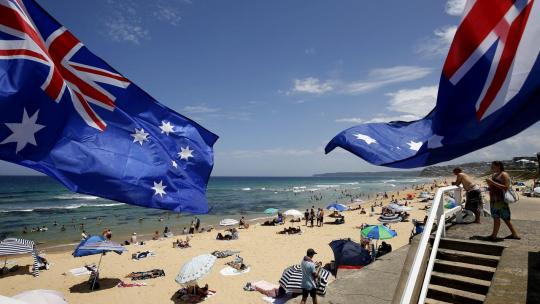
In February 2023, the mainstream media and industry websites were awash with news of huge job losses across the Australian tech sector, predominantly in US-owned enterprises.
However, despite the shock imparted by so many largely unexpected sackings, the sector has nevertheless shown extraordinary resilience in terms of job opportunities. Despite the initial gloom, it seems that many of those who found themselves out of work at the beginning of the year are already in new jobs, with the tech industry as a whole in the midst of a job boom.
It would appear that optimism is permeating the sector at all levels, with recruiters reporting new opportunities and roles opening up all the time; in fact, the overall impression is that Australia is suffering from a technology skills shortage, given that the country has only hit 78% of its 2030 tech job target of 1.2 million, according to a report released by the Tech Council of Australia.
And with some of the biggest names in tech running operations in Australia, including Google, Netflix, Twitter, Atlassian, Stripe, Microsoft and many more, anyone with experience and expertise in virtually any part of the sector will find plenty of job options open to them.
This is also in large part due to the fact that there are new jobs being created in non-traditional tech industries, meaning that a wide range of less specialized digital and IT skills are increasingly in demand across the country.
The Tech Sector in Sydney
Sydney, the capital city of New South Wales, is the most populous city in the country and is widely regarded as Australia’s principal tech hub, which is why it is the most likely destination for tech professionals looking to develop their careers in Australia.
However, conditions in the tech sector across the country are such that the workplace environment is generally going to be positive, well compensated, and promote a healthy life/work balance wherever in Australia you’re based.
Generally, the Australian working week is 39 hours, from Monday to Friday (although each state has its own laws in some areas, employment law is made federally and can be found in the Fair Work Act, 2009), with overtime being paid when an employee works beyond their normal daily or weekly hours of work, and/or outside the ordinary spread of their working hours.
Full-time employees receive four weeks’ annual paid leave, the exception being shift workers, who receive five weeks. In addition, employees receive ten days’ paid leave each year, which can be used either during illness or to provide care for a member of the family.
New mothers in Australia are entitled to 12 months of unpaid maternity leave after a year of working for the same company (some businesses will offer paid maternity leave as well).
How to Find Tech Jobs in Australia
For anyone looking for tech jobs in Australia, there are a variety of online job boards and sites that list opportunities in cities across the country.
Seek is one of the biggest and most popular Australian job sites, along with Indeed and Hays. Commonwealth and state governments also list job vacancies on their own websites, as well as advertising on job boards (cyber security is a field in which there is a multitude of government IT jobs advertised regularly).
There are also a number of specialist tech recruiters in Australia. Some will just be Sydney-focused, but most have a national reach and fill positions in all capital cities. Some offer a broad range of jobs in all sectors of the tech industry, while others are a little more specialised.
Talent Locker is a particularly well-known tech recruiter, as are PRA and ScaleUp Recruitment. Luvo Talent is also worth checking out, as are Thornhill and Datasource Services.
The Tech Scene in Canberra

As mentioned above, there are numerous tech openings working for the Australian government, most of which will be located in Canberra, the nation’s capital, although the federal government has a large presence in Sydney and in most capital cities.
Being a government-centric work environment, jobs in the tech sector tend to pay well in Canberra. The average wage in the ACT is around AUD$80,000 a year, but people working in IT can generally expect to earn significantly more.
For instance, a software engineer can expect to earn in excess of AUD$90,000, a project engager will earn AUD$125,000, while a senior project manager in the IT sector can usually earn more than AUD$142,000 a year.
In Canberra, as elsewhere in Australia, significant numbers of people (particularly those in certain areas of tech) are afforded the opportunity to work remotely at least part of the time (although there are growing demands from employers for workers to get back to the office).
At the same time, remote work, while based overseas, is also becoming more commonplace in the ACT, Sydney and elsewhere in Australia. The latest data reveals that a total of 29% of Australian adults worked remotely in 2022, while 14% are now planning to work remotely from overseas in 2023.
Investment in Training and Education
As a consequence of the widespread skills shortage in tech across Australia, driven in part by the fact that hitherto non-tech jobs and roles nevertheless require digital and IT skills to some extent, Australia is trying to grow the number and variety of training opportunities that are available, both for those already working in tech and those who are looking to join the industry.
Both the federal government and key players in the Australian tech sector are increasingly working together to encourage people of all ages across the country to upskill so that they are better equipped to meet the country’s growing needs, not to mention the nationwide 1.2 million tech job target that the government wants to reach by 2030.
What Next for the Tech Sector in Australia?
Ultimately, the outlook is fairly positive if you are looking for work in the tech sector in Australia, as significant numbers of jobs continue to be available (it is estimated that 70,000 new jobs in the sector have been created in the last twelve months).
However, as stated above, there is a need for people with digital skills in all areas of Australian enterprise — not just the specialist tech sector — and so there are new types of roles opening up all the time, particularly for those with transferable skills.
It is also a relatively good environment for employers at the moment in that although there is something of a skills shortage, a large number of vacancies does mean that skilled and qualified tech workers are not as hesitant as they once might have been to move jobs. So it is possible to attract the best tech talent with the right compensation package.
This does, of course, put upward pressure on wages, but this is inevitable in an environment where those with the right experience, expertise and know-how are consistently in demand.
Source: ITBrief
0 notes
Text
Family Sponsorship: Bringing Your Loved Ones to Australia

Australia is known for its beautiful landscapes, diverse culture, and high standard of living, making it an attractive destination for individuals seeking a better quality of life. For many people who have migrated to Australia, being able to reunite with their loved ones is a significant priority. Fortunately, Australia offers a Family Sponsorship program that allows eligible Australian citizens and permanent residents to sponsor their family members to join them in this thriving country. In this article, we will delve into the details of family sponsorship and the process of bringing your loved ones to Australia.
Who Can Be Sponsored?
Under the Australian Family Sponsorship program, Australian citizens, permanent residents, or eligible New Zealand citizens can sponsor their immediate family members, including spouses, de facto partners, dependent children, and in some cases, parents. It's important to note that sponsoring extended family members, such as siblings or cousins, are generally not permitted under this program.
Types of Family Sponsorship Visas:
There are several visa options available for family sponsorship in Australia. The choice of visa will depend on the relationship between the sponsor and the applicant, as well as the specific circumstances. Let's explore some of the common family sponsorship visa categories:
Partner Visa (Subclass 820/801 or 309/100):
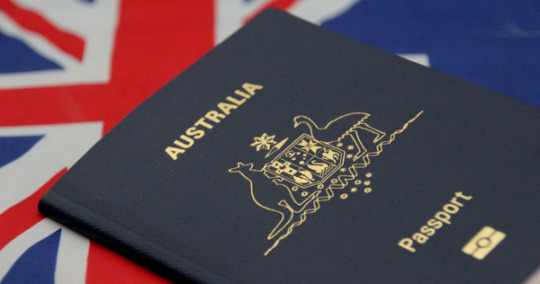
The Partner Visa Australia is intended for spouses or de facto partners of Australian citizens, permanent residents, or eligible New Zealand citizens. It allows the applicant to live, work, and study in Australia permanently. The subclass numbers indicate whether the applicant is onshore (820/801) or offshore (309/100) when applying.
Child Visa (Subclass 101/102 or 802):
Dependent children of Australian citizens, permanent residents, or qualifying New Zealand citizens are eligible for the Child visa. This visa allows the child to reside in Australia permanently. The subclass numbers vary depending on whether the child is applying from inside or outside Australia and whether they are applying alone or with their parents.
Parent Visa (Subclass 103/143 or 804):
The Parent visa is for parents who wish to join their Australian citizen, permanent resident, or eligible New Zealand citizen child in Australia. It allows parents to live in Australia temporarily or permanently, depending on the subclass. The application process for parent visas can be quite lengthy and complex.
Contributory Parent Visa (Subclass 173/143 or 884/864):
The Contributory Parent visa is an alternative option for parents who are willing to make a higher financial contribution. This visa allows parents to live in Australia permanently, with a shorter processing time compared to non-contributory parent visas.
Sponsorship Obligations:
Sponsoring a family member to come to Australia is a significant commitment, and there are certain obligations that the sponsor must fulfill. These obligations are in place to ensure that the sponsored person has adequate financial and emotional support upon arrival. Some key sponsorship obligations include:
Financial Support:
The sponsor is required to provide financial support to the sponsored family member for a specific period. This includes accommodation, food, and other basic needs.
Assurance of Support:
In some cases, the sponsor may be required to provide an Assurance of Support, which is a legal commitment to repay any welfare payments made to the sponsored person by the Australian government.
Health and Character Requirements:

Both the sponsor and the applicant must meet certain health and character requirements set by the Australian immigration authorities.
Relationship Documentation:
It is crucial to provide sufficient evidence to establish the genuine nature of the relationship between the sponsor and the applicant. This may include marriage certificates, joint financial documents, photographs, or other supporting documentation.
Application Process:
The application process for family sponsorship visas can be complex and time-consuming. It involves several stages, including the sponsorship application, the visa application, and the assessment of supporting documents. The specific requirements and processing times vary depending on the visa category and individual circumstances.
It is highly recommended to seek professional advice from a registered migration agent or immigration lawyer who can guide you through the process, ensure that all requirements are met, and increase the chances of a successful application.
Final Overview:
Family sponsorship offers a pathway for Australian citizens, permanent residents, and eligible New Zealand citizens to bring their loved ones to Australia. Whether it's a spouse, child, or parent, the Australian Family Sponsorship program provides various visa options to facilitate family reunions. However, it's important to understand the specific requirements, obligations, and processes involved in sponsoring a family member.
If you are considering sponsoring a family member, it is advisable to seek expert guidance to navigate the complexities of the Australian immigration system and ensure a smooth and successful application. Reuniting with loved ones in Australia can be a fulfilling and life-changing experience, allowing families to create lasting memories in a country known for its opportunities and high quality of life.
0 notes
Text
Australia to Overhaul Immigration Policy, Joining Race for Talent

Australia will join the global competition for highly skilled professionals by changing its immigration policy for the first time in a decade, with the first step set to be taken next month -- ensuring higher pay for newly arriving temporary visa holders.
"If 'populate or perish' described Australia's challenge in the 1950s, 'skill up or sink' is the reality we face in the 2020s and beyond," Home Affairs Minister Clare O'Neil said recently, stressing the need to update the country's immigration system.
She was referring to the slogan that came to describe the country's immigration policy more than half a century ago.
The government now has a series of changes ready to keep Australia attractive to immigrants and to become competitive in the global race for next-generation technologies.
That first step has to do with something called the temporary skilled migration income threshold (TSMIT), which companies must guarantee before the government issues a temporary skilled visa. The threshold on July 1 will be raised to 70,000 Australian dollars ($47,000), up from the current A$53,900.
More than 90% of full-time workers in Australia make more than the current TSMIT.
By ensuring that companies pay foreign workers higher salaries, the government intends to prevent businesses from filling jobs with low-wage immigrants.
In order to improve the situation in which many immigrants are stuck in temporary visa status, the government plans to allow all temporary skilled visa holders to apply for permanent residency by the end of this year.
In another step, cumbersome visa application processes will be simplified. This will be done by whittling down "the hundreds of visa categories and subcategories," according to O'Neil. This is expected to shorten the amount of time needed to obtain a visa.
The government will also try to make it easier for highly skilled professionals to quickly obtain visas.
Meanwhile, the government plans to introduce a more stringent "point test" to screen permanent residency applicants that will emphasize skills which could contribute to the future national interest.
The guarantee of higher pay for temporary foreign workers has alarmed some restaurateurs and other service sector business owners. They say the higher wages will mean higher costs for them. Suresh Manickam, CEO of Restaurant & Catering Australia, told local media that family-run and other small restaurants will be most affected by the move.
Food and Beverage Services is the top hirer of temporary residents. The industry in 2022 employed 112,700 of them, according to the Australian Bureau of Statistics.
According to local media, the measures could reduce the number of immigrants who work at low wages by up to more than 30,000 annually. This estimate is based on how employers are expected to react when they have to guarantee drastically higher salaries before their workers can renew their visas.
Australia had over 1.6 million temporary visa holders as of August 2021, 95,600 of whom held a temporary skilled visa that is usually valid for two to four years.
The government also expects the number of immigrants to decline as a result of the reforms.
As consumers fight higher living costs by tightening their purse strings, businesses are finding it difficult to pass on their rising costs in the form of higher prices. With the unemployment rate already at a nearly 50-year low, the service industry could be facing a more serious labor shortage.
Source: https://asia.nikkei.com/Politics/Australia-to-overhaul-immigration-policy-joining-race-for-talent
0 notes
Text
Alberta Has The Highest Potential Salary For An Internationally-Trained Truck Driver

Alberta has the second-highest number of job vacancies for truckers in the country and so provides a tremendous opportunity for foreign nationals who want to immigrate or temporarily work in Canada.
In late May, the Job Bank federal job-hunting and career-planning website listed 802 job ads in Alberta for truckers, categorized under the National Occupational Classification (NOC) 2021 with the code 73300, and many employers were seeking to fill multiple positions.
Edmonton and Calgary-based employers accounted for the vast majority of those job offerings. There were then 446 job vacancies for truckers in Edmonton, the provincial capital, and 269 in Calgary.
Together, the province’s two major cities accounted for 715, or 89.1 per cent, of all open trucking jobs in Alberta in late May.
In Alberta, the median hourly wage for trucking jobs is $28 but that varies from a low of $18.12 per hour right up to $37.45 per hour, reveals Job Bank.
Based on a standard 37.5-hour work week, that would be $73,027 at the upper end of the annual wage scale for truckers in Alberta.
But truck drivers are also often paid bonuses by the kilometre, enabling them to earn significantly more.
With transportation companies desperately looking for truckers to replenish and grow their aging workforce, both the federal and provincial governments have been helping out with immigration policies to grant work permits and permanent residence to qualified foreign workers looking for these kinds of jobs in Canada.
Alberta is one of the participants in the Economic Mobility Pathways Pilot (EMPP) which is expected to start helping employers hire skilled refugees and other displaced individuals, including for trucking jobs, starting this summer.
That will allow refugees who are truckers to immigrate to Alberta under the EMPP and get jobs in the transportation sector.
“Canada is a global leader in helping skilled refugees connect with employers struggling to find workers in critical areas, while giving newcomers the opportunity to restart their careers and their lives here in Canada,” said Immigration Minister Sean Fraser.
“Our government will continue to develop and scale innovative immigration measures to help employers address their critical labour shortages and provide refugees with the opportunity to live in safety while rebuilding their lives.”
Foreign nationals who are not refugees can also immigrate to Alberta as truck drivers through the federal, Express Entry Federal Skilled Worker (FSW) program.
In mid-November last year, truck driver was one of 16 occupations added to the FSW’s list of eligible occupations when the IRCC updated to the NOC 2021 classification system.
Internationally-Trained Truckers Now Qualify For Immigration To Canada Under The FSW
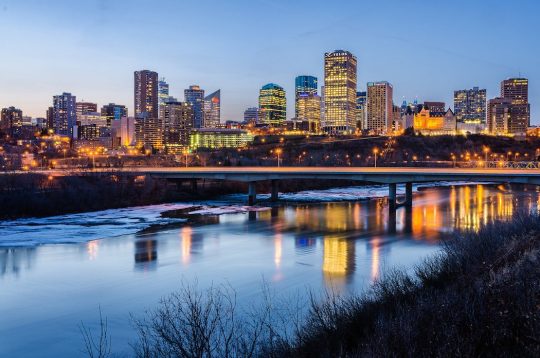
Qualifying applicants under the FSW can apply through Alberta Express Entry and get a provincial nomination which ups the foreign national’s Comprehensive Ranking System (CRS) points-based score and greatly helps them get an Invitation To Apply (ITA) for permanent residence.
Truck driver under NOC 73300 is also one of the 82 jobs to be targeted as part of new occupation-specific Express Entry draws. Immigration, Refugees and Citizenship Canada announced the new draws on May 31, saying they would start in summer 2023.
Once nominated, the next step is to apply to the federal government through Immigration, Refugees and Citizenship Canada (IRCC). The IRCC makes the final decision on who becomes a permanent resident.
Temporary foreign workers already in the province in trucking jobs can also qualify through the Alberta Opportunity Stream.
In Canada, foreign nationals can often come under a temporary work permit, through the Temporary Foreign Worker Program (TFWP), or a study visa, gain work experience and then apply for permanent residence under a federal Express Entry program.
The TFWP has been a primary avenue for trucking companies to hire workers from overseas but this requires the employer get a positive Labour Market Impact Assessment (LMIA).
Under the TFWP, qualified applicants receive a Canadian visa and, depending on the province, can transition to Canadian permanent residence through an Express Entry immigration program, such as the Canadian Experience Class (CEC) program.
The CEC requires that applicants have 12 months of Canadian work experience within the past three years.
Source: https://www.immigration.ca/alberta-has-the-highest-potential-salary-for-an-internationally-trained-truck-driver/
0 notes
Text
Top 12 Highest Paying Jobs in Australia
With wages failing to keep up with inflation and cost of living pressures intensifying, many Australians are on the hunt for higher paid work. While record numbers are turning to side hustles, others are jumping ship to new organisations or even industries for more lucrative remuneration.

Unlike in the United States, the ‘Great Resignation’ did not eventuate in Australia, however one in three workers aged between 25 and 55 are currently considering quitting their jobs. This is not necessarily due to the desire for higher pay—it could also include burnout, lack of career progression or dissatisfaction with management. However, pay and wellbeing are consistently ranked as the two most important things to employees. With that in mind, here are some of the most lucrative professions in Australia. The below data is provided by Hays Recruitment, and is based on their annual pay guide, which was released on June 1.
Forbes Advisor has created a separate list for medical professionals, as these are highly specialised careers and offer a range of roles that pay well above average salaries. Please note that salaries may vary according to a number of factors, such as the state you live in or if you live in an urban or rural area, your specific qualifications and the length of time you’ve been employed with a particular company or in a specific role.
The Highest Paying Jobs in Australia in 2023
Legal: Equity Partner (up to $850,000)It takes considerable time and dedication to become an equity partner in a law firm but the pay, once you get there, is considerable. Equity partners in top private practices in Perth, Brisbane, Melbourne and Sydney report average salaries of more than $500,000, with Sydney topping the list at $850,000 plus.
Meanwhile, a general counsel typically earns between $250,000 and $400,000.
Executive: CEO and MD ($700,000)
If you’re a CEO or managing director at a company with a turnover between $50 million and $500 million, the typical income is $600,000 but can reach up to $700,000.

Similarly, for chief operating officers and executive general managers, incomes are typically around $500,000 but can also hit $600,000. Chief financial officers and finance directors in the same organisations typically earn around $450,000 but can also reach $600,000.
Hays notes that CEOs need to be top performers across a range of areas, including organisational strategy, organisational alignment, external stakeholder relations and board engagement.
Retail: General Manager (up to $510,000)
Salaries in retail run the gamut, ranging from $153,000 to $408,000 for head office retail directors to $408,000 for merchandise managers and between $204,000 and $510,000 for general managers.
Other high-paying retail jobs include group planning managers or directors ($160,000 to $300,000), national operations managers ($153,000 to $306,000), heads of design or creative directors ($140,000 to $255,000), and buying managers ($150,000 to $204,000). E-Commerce managers have also risen in prominence in recent years, with the highest reported salaries reaching above $200,000.
Accountancy & Finance: Head of Treasury ($410,000)
Heads of treasury have some of the top paying jobs in Australia in the realm of accounting and finance, with the average pay for a head of treasury in Sydney coming in at $410,000.
Meanwhile, head of tax, head of risk and head of internal audit can earn up to $400,000, while group financial controllers typically earn around $280,000 in organisations with turnover exceeding $300 million.
Various heads of internal audit can command $300,000, senior commercial managers or directors are typically on $270,000, while the heads of risk can attract $300,000. In professional practice, corporate finance principals or directors are on $220,00, insolvency principals or directors take home $200,000 a year and tax consulting principals or directors are paid $180,000.
Property: Development Director (up to $388,000)
As Hays notes, jobs with the highest salary in Australia’s property sector today include development directors, who can earn an average salary of between $224,000 and $388,000 in Sydney—although Brisbane development directors have the highest typical salary at a healthy $306,000. Meanwhile, development managers can expect an average salary of between $133,000 and $255,000, and $179,000 and $245,000 for client-side project directors.
Energy: Project Delivery Director (up to $357,000)
Project development directors in renewable energy are among the highest paid in the sector, with the top earners in Sydney ($224,000 to $350,000) and Melbourne ($260,000 to $357,000). Development directors need to draw on their ‘soft skills’ in order to succeed, taking a collaborative approach to stakeholder relations and a strategic approach to big projects, Hays notes.
Construction managers in renewables can earn between $153,000 and $230,000, while grid connections managers are paid between $173,000 and $250,000.
Construction: Construction Manager (up to $320,000)
The construction sector has been facing some supply challenges of late, but there remain many in-demand and high paying roles. Construction managers are the highest paid at between $250,000 and $320,000, while project managers take home $160,000 to $250,000. Senior estimators earn $120,000 to $200,000, while site managers and design managers are on between $150,000 and $220,000 and $180,000 and $240,000 respectively.

In civil construction, construction managers can receive a typical salary of between $180,000 and $280,000 while project managers earn between $160,000 and $210,000. In residential construction, a construction manager can earn a typical salary of between $160,000 and $220,000.
Sustainability: Head of sustainability (up to $310,000)
Demand for experienced sustainability professionals continues to rise, with heads of sustainability or ESG earning up $310,000 in Western Australia. Meanwhile, sustainability managers are on roughly $230,00.
Technology: CIO and CTO ($306,000)
Hays notes that tech salaries traditionally run on two tracks: pay brackets that increase steadily over time and those that spike exponentially. While there are many roles in tech that command average salaries between $150,000 to $200,000, managers earn considerably more than this. The typical salary earners in leadership positions are based in Sydney and include chief information security officers ($255,000), chief information officers and chief technology officers (both on $306,000).
Meanwhile, project directors earn $260,000, program managers are on $210,000 and enterprise architects command $230,000 in projects and change management.
Marketing & Digital: Executive Director of Communications ($300,000)
Executive directors of communications in PR and communications have huge earning potential, and in Sydney can expect a typical salary of $300,000. Similarly, Sydney-based marketing directors can expect to earn an average salary of $220,000, while directors of communications earn $215,000. Bid managers are on $180,000, PR directors command $180,000 and sponsorship/fundraising directors pull in $175,000.
Human Resources: Head of HR/HR Director ($300K)
Demand for skilled and experienced HR professionals has grown in recent years, with heads of HR or HR directors in organisations with more than 1,000 employees typically earning around $300,000 in Sydney, $280,000 in Melbourne and $250,000 in Perth.
Average annual typical salaries are also high for heads of learning and development, coming in at $224,000.
Banking: State Manager ($300,000)
The banking sectors continues to offer competitive salaries, with state managers typically earn $300,000. Meanwhile, in business and commercial lending and corporate and institutional lending, executive managers and heads of departments (think financial planning, credit, market and operational risk, compliance, anti-money laundering and regulatory risk), can attract salaries above $200,000.
The Highest Paying Jobs in Medicine
The incomes below are a guide only, but offer some insight into what top medical professionals can command.

Surgeon – $406,068
Surgeons make an average of $406,068 a year and report high levels of job satisfaction as well, according to Hays.
Anaesthetist – $388,814
Anaesthetists, like surgeons, have a hugely important role and make an average of $388,814 a year and there are only approximately 3500 of them in Australia, according to the ATO.
Internal medicine specialist – $310,848
Internal medicine specialists comprise specialist physicians, cardiologists, endocrinologists, neurologists and paediatricians. They earn an average of $310,848 per year.
Psychiatrist – $252,691
Psychiatrists earn an average of $252,691 per year. The current shortage of psychiatrists has been flagged by the federal government as a concern by 2030 unless an intervention is made – and in the meantime it will only drive salaries higher.
What Are The Highest Paying Jobs In Australia That Don’t Require A Degree?
Of course, the top professions we have just listed all require extensive university training and qualifications.
The three highest paying jobs that do not require a university degree are ICT managers; chemical, gas, petroleum and power generation
plant operators; and ICT sales professionals, according to the Monarch Institute.
Information and communications technology: $170,955Chemical, gas, petroleum and power generation plant operators: $168,376
ICT sales professionals: $157,123. This includes specialist roles such as account manager and sales representative.
Average Australian Salaries in 2023
The median full-time worker in Australia earned $78,800 in 2022, while the median part-timer took home $32,400 last year, according to the Australian Bureau of Statistics (ABS). When both types of employees are combined, the median salary is $65,000. That is to say, half of all employees in Australia earned more than this, and half earned less.
A taxable income that was $131,501 or higher was within the top 10% of earners in Australia last year. About 5% of taxpayers had incomes above $180,000. Someone who earned more than $253,066 was in the top 1%.
When discussing the ‘typical’ wage, averages are less representative than medians, because there are a handful of very high earners who skew the results by earning millions or even billions of dollars.
A middle-income household typically comprises a couple with children living off one full time job of around $85,000 and a part-time job of around $30,000 per year. This middle 20% has a combined weekly income of $1,884 ($97,986 annually), according to a report by the Australian Council of Social Service (ACOSS).
Are you looking for a higher paying job?
If so, you aren’t alone. Many people are facing day-to-day financial stress as living expenses remain at record highs. It is therefore unsurprising that one in three employees is considering quitting their jobs, according to a PwC report. Pay and wellbeing were ranked as the top two most important factors in a job, according to the report.
Source: Forbes
0 notes
Text
Category-Based Selection to Be Introduced for Express Entry

The Canadian government announced plans to introduce category-based selection for Express Entry.
Key Points:
For 2023 Express Entry, Canadian authorities will prioritize category-based selection invitations for individuals who have:
A strong French language proficiency.
Work experience in agriculture, healthcare, STEM professions, transport and trades.
A complete list of eligible jobs for the new categories is available on this website.
To be eligible for an invitation through a category-based round, individuals must meet all requirements in the instructions for that round.
Additional Information: Canadian authorities will provide more details regarding the timing of invitations for individual categories and how to apply in the coming weeks.
Source: https://www.bal.com/bal-news/canada-category-based-selection-to-be-introduced-for-express-entry/
0 notes
Text
IRCC Provides Update on Impact of Labor Disruption

The Public Service Alliance of Canada (PSAC) and the Federal Government of Canada came to an agreement after a strike lasting from April 19th to May 1st. The strike had an impact on over 155,000 public servants, including those of Immigration, Refugees and Citizenship Canada (IRCC).
IRCC says there may be some service impacts over the next while until services return to full capacity and delays are dealt with.
What Services Were Partially or Fully Disrupted?
Most IRCC services were impacted, and delays should be expected within the following areas:
Biometrics
Citizenship events
Contacting IRCC
Extending your stay in Canada
Immigration related appointments
Passport services
Processing applications
Biometrics collection in Canada are being given an extension. If you were unable to give your biometrics within 30 days due to the strike, you are now given 60 days to complete this step. You will not be required to contact IRCC from an extension nor will you need a new biometric instruction letter to make another appointment. As long as you bring your original biometric instruction letter to your new appointment and have proof of payment you will be eligible for the extension.
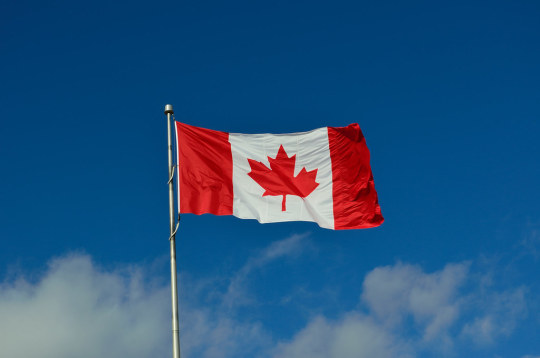
Citizenship events that were cancelled due to the strike are currently in the process of being rescheduled, and new invitation letters are to be sent out as soon as possible.
Client Support Centre response times are experiencing service delays following the strike, so you should expect longer response times when using the IRCC web form.
In regards to extending your stay in Canada, you can apply online. However, you must meet the following conditions to maintain your status and remain in Canada until a decision is made on your application:
Your extension application must be submitted online
The application must be complete and include biometrics, fees and any other applicable requirements
You must submit your application before your temporary residence status expires
If you are in Canada, any in person immigration related appointments that were cancelled due to the strike are in the process of being rescheduled, and you will be notified of your new appointment as soon as possible. If you are outside Canada, overseas interviews are proceeding as scheduled, unless indicated otherwise.
IRCC has resumed processing domestic passport applications. If you have already submitted a passport application, it will be processed and there is no need to reapply. You can also get real-time updates on the processing of your applications through the online passport status checker.
If you applied for a passport prior to the strike and the application is currently being processed, you may contact the Passport Call Centre or visit a passport office to request that your application be prioritized if you have an imminent need.
IRCC has been experiencing a higher volume of applications, which may cause longer line ups at passport offices and Service Canada Centers and longer processing times.
Finally, processing application times have been increased as there was limited processing capacity during the strike. Delays in applications that are currently being prioritized is also to be expected.
Source: CIC NEWS
0 notes
Text
A Comprehensive Guide on How to Get Visa for USA

Different Categories of U.S. Visas
There are two main types of U.S. visas. There's the non-immigrant visa which is used to travel to the United States on a temporary basis, and there's the immigrant visa that's used for those who want to migrate and live permanently in the country.
Common Non-Immigrant Visas
There are different kinds of non-immigrant visas and each specifies a purpose to travel to the U.S. We will discuss in detail the common non-immigrant U.S. visas:
Business Visa (B-1): This visa is issued for foreign nationals traveling to the United States for business purposes, such as attending business meetings or consultations, conventions, and conferences, or negotiating contracts.
Tourist Visa (B-2): This visa is used for foreign nationals who want to travel to the United States for tourism purposes. This is also the same visa issued for foreign nationals seeking medical treatment in the U.S.
Student Visa (F, M): This visa is used for academic and vocational studies.
Media Visa (I): This visa is issued for foreign media, press, and radio.
Exchange Visitor Visa (J): This visa is for foreign nationals who are traveling to the U.S. to participate in a cultural exchange program. To be more specific, the different purposes of travel include categories of au pair, physician, professor, scholar, teacher, and exchange visitor.
Temporary Employment Visa (H, L, O, P, Q): The Temporary Employment Visa is issued for petition-based temporary employment in the U.S. The different visa categories under these are H-1B issued for people in a specialty occupation, H-1B1 for Free Trade Agreement professionals, H-2A for temporary agricultural workers, H-2B for temporary non-agricultural work, H-3 for trainee or special education visitors, L visas are issued for the purpose of intracompany transferee, O for individuals with extraordinary ability and achievement, P-1 for individuals, team athlete, or member of an entertainment group, P-2 and P-3 for artists and entertainers, and Q-1 visas are for participants in an international cultural exchange program.
Transit Visa (C): This visa is issued for travelers who have immediate and continuous transit that passes through the U.S. (a.k.a. layovers) en route to another country.
Common Immigrant U.S. Visas
The immigrant Visas are categorized into three, namely family-sponsored visas, employment-based visas, and diversity visa programs.
Immediate Relative & Family Sponsored (IR1, IR2, IR3, IR4, IR5, IH3, IH4, CRI, CR2, K-3, K-1, F1, F2A, F2B, F3, and F4): These visa categories are for applicants who are either a spouse of a U.S. citizen, fiancé/fiancée who will marry a U.S. citizen and live in the U.S., adoption of an orphan child by a U.S. citizen, or for certain family members of a U.S. citizen or lawful permanent residents.
Employer-Sponsored (E1, E2, E3, EW3, C5, T5, R5, I5, S, SD, SR, SI, and SQ): These visas are issued for employment-based immigrants such as religious workers, Iraqi and Afghan translators and interpreters, and Iraqis and Afghans who worked for/on behalf of the U.S. government.
Diversity Immigrant Visa (DV): This visa is issued for those who successfully registered for the Diversity Immigrant Visa (DV) Program.
Returning Resident (SB): This visa is for permanent U.S. residents or conditional residents who stayed outside of the U.S. for more than one year or beyond the validity period of a re-entry permit, that need a new immigrant visit to re-enter the country.
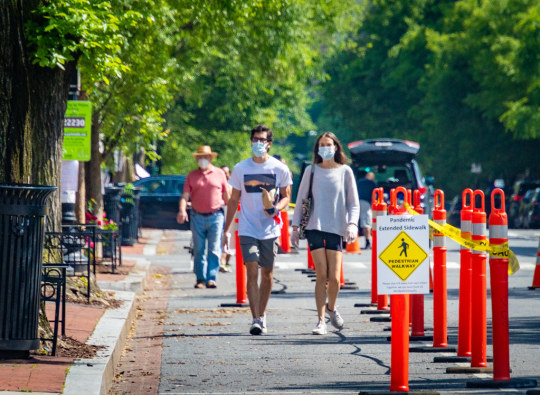
For those who do not see a visa category that fits their reason for traveling to the U.S., it is best to refer to the U.S. Embassy of the Philippines' list of visas.
How to Determine the Right Visa Category to Apply For?
The U.S. Embassy has what you call a "Visa Wizard" which guides you in identifying which visa category to apply for. It asks questions such as, "What country/authority or area issued your passport?" and "Why are you traveling to the U.S.?"
This does not determine if you are or aren't eligible to receive a U.S. visa. It is still up to the U.S. Embassy to decide your eligibility and the visa category suitable for your purpose of travel.
List of U.S. Visa Requirements
The specific requirements for a U.S. visa depend on the type of visa you're applying for. However, there are similar or general requirements that apply to most types of visa categories. Here is a list of those requirements:
Valid passport: The passport must be valid for at least six months beyond the period of stay in the U.S.
A completed visa application: Depending on the visa category you're applying for, the visa application can be accomplished online or in person at a U.S. consulate or embassy.
Receipt of payment of visa fees: Visa fees, which are non-refundable, vary depending on the type of visa being sought.
Photo: Most visa categories will require a colored 2x2 photo of you within the last six months. There are specific requirements for the photo, i.e. that the applicant's photo should be of in a full-face view and with a neutral facial expression, taken behind a plain white or off-white background, and wearing clothes normally worn on a daily basis. See the list of requirements.
Evidence of ties to home country: Especially for tourist visas, it is best to have evidence of your employment or family ties in the Philippines. This is to show that you, the applicant, have a purpose to return to your home country. This may include proof of employment, family ties, property ownership, or other evidence.
Health and character requirements: Some visa categories require applicants to undergo medical examinations and/or provide police clearance certificates. For example, immigrant visas require a medical exam in the Philippines prior to the visa interview, specifically at St. Luke's Medical Extension Clinic at 1177 Jorge Bocobo St, Ermita, Manila.
Supporting documents: Supporting documents vary depending on the visa category, such as bank statements and travel itineraries. For those applying for a student visa (F, M), a consular officer may require documents such as transcripts, diplomas, and degrees.
U.S. Visa Application Forms and Links
The U.S. Embassy has standardized visa application forms, both in print and online, depending on the visa category you want to apply for. These need to be fulfilled before the scheduled visa interview.
Non-Immigrant Visa Forms and Links
DS-160: Online Nonimmigrant Visa Application
DS-156E: Non-immigrant Treaty Trader or Investor Application
DS-158: Contact Information and Work History for Nonimmigrant Visa Applicant
DS-1648 Online: Application for A, G, or NATO Visa
DS-2019: Certificate of Eligibility for Exchange Visitor Status. : This does not have a downloadable form or link. It is advised that the applicant contact their exchange visitor program sponsor.
DS-3035: J-1 Visa Waiver Recommendation
Immigrant Visa Forms and Links
DS-117: Application to Determine Returning Resident Status
DS-157: Petition for Special Immigrant Classification for Afghan SIV Applicant
DS-230: Application for Immigrant Visa and Alien Registration (Cuban Family Reunification Parole applications only)
DS-260: Immigrant Visa and Alien Registration Application (Immigrant Visa and Diversity Visa Program applications only) (Sample)
DS-261: Choice of Address and Agent
DS-234: Special Immigrant Visa Biodata Form
DS-1981: Affidavit Concerning Exemption from Immigration Requirements for a Foreign Adopted Child
DS-1884: Petition to Classify Special Immigrant Under INA 203(b)(4) as an Employee or Former Employee of the U.S. Government Abroad
FAQs on the U.S. Visa Application Process
How Much Does It Cost to Apply for a U.S. Visa?
For non-immigrant visas, the fee starts at U.S. $160 or P8,929, while an immigrant visa application processing fee starts at U.S. $205 or P11,441. These visa fees are non-refundable. In some visa categories (i.e. E-1, E-2, H-1B, H4, L-1, L-2, R-1, and R-2) there is a need to pay for an additional visa issuance fee that ranges from U.S. $363 or P20,278 to U.S. $813 or P45,417.
*United States Dollar to Philippine Peso exchange rate used as of May 15, 2023.
How Can I Pay For My U.S. Visa Application Fee?
You can pay for the visa application fee online via PesoNet or RCBC, or through bank transfers via RCBC. Here's what you need to know:
Online payment: All payments made from midnight to 3 p.m. via RCBC, will receive the receipt purchase date on the same day. It is best to book the interview four to 24 hours after the payment.
Bank transfer: For online payments made through RCBC and PesoNet, the receipt purchase date will be given the next day. It is best to book the interview a day after the receipt purchase date and after 11 a.m.
How to Schedule a USA Visa Interview Appointment?
There are two ways to schedule the interview: online and live chat.
Online: First, you must register and create a profile on the U.S. Department of State's website. This will ask for your visa type, visa category, visa class, and personal data (passport details, contact information, mailing address), then you can proceed to the calendar which will tell what dates are available for the interview.
Live Chat: You may also opt to schedule an appointment through the U.S. Embassy's live chat by clicking the red LIVE CHAT button. This is available from Monday to Friday, 9 a.m. to 5 p.m. (except during Philippine and U.S. holidays).
What Do I Need to Bring to the U.S. Embassy on the Day of My Interview?

There are different requirements per visa category, but below are the common documents that need to be hand-carried and submitted to the U.S. Embassy by non-immigrant (B-1 and B-2) visa applicants on the day of the scheduled interview:
A valid passport and if applicable, old passport/s with a U.S. visa
A printed copy of DS-26
Visa application fee receipt
One 2x2 colored photo
Supporting documents: current proof of income, tax payments, travel itinerary, a letter from employer detailing your employment, criminal/court records pertaining to any arrest or conviction.
For students: latest school results, transcripts, and degrees/diplomas. Best to bring monthly bank statements, and fixed deposit slips to show financial support.
For working adults: employment letter from employer and payslips from the most recent three months.
For business visitors: evidence of your position in the company and remuneration.
For those visiting a relative: photocopies of your relative's proof of status (e.g. Green Card, naturalization certificate, valid visa, etc).
For previous visitors to the U.S.: any documents attesting to your immigration or visa status.
For those seeking medical treatment: medical diagnosis from a local physician, a letter from a physician or medical facility based in the U.S. that's willing to treat the medical condition, and a statement of financial responsibility from the individual/organization paying for your transportation, medical, and living expenses.
IMPORTANT: If you're not applying for a B-1 or a B-2 visa category, check this list of requirements needed for the visa category you're applying for.
For security reasons, visa applicants are not allowed to bring any battery-operated or electronic device (mobile phones, digital watches, cameras, laptops, et cetera) inside the U.S. Embassy.
The following items, but not limited to, are also not allowed inside the U.S. Embassy: large shoulder bags, backpacks, briefcases, food items, sealed envelopes or packages, cigarettes, cigars, lighters, sharp objects, weapons, and explosive materials. The embassy does not have a storage facility or lockers where you can store your phone and other prohibited items.
Where is the U.S. Embassy in the Philippines?
The interview is held at the U.S. Embassy in Manila, 1201 Roxas Boulevard, Manila, Philippines. For inquiries, the U.S. Embassy can be contacted at (632) 5301-2000.
The U.S. Consular Agency is at Waterfront Hotel, Lower Ground Floor, 6000 Salinas Dr, Lahug, Cebu City. You can contact them at 32 231-1261. The agency does not provide any visa services to Filipinos, they only assist U.S. citizens based in the area and U.S. citizens in nearby provinces who are in need of passport and citizenship services.
How Much Money Should I Have In My Bank?
There is no specific predetermined amount balance needed. In fact, in some cases, the consul officer doesn't ask for the bank records, while in some, even having more than a hundred thousand pesos doesn't guarantee an approved U.S. visa application. Remember that show money isn't the only factor the consul officer considers in approving or denying your application.
How Long Before My U.S. Visa Application Gets Approved?
Applicants will know during the interview itself if the application is approved or denied. The consul officer who will conduct the interview will notify you of your visa status by the end of the interview. If denied, a reason for the denial is provided.
How Long Is the Validity of My U.S. Visa?
Part of the admission process is that the consul officer decides right after the interview, on the spot, whether to grant the U.S. visa. However, in most cases, the consul officer won't specify the period of validity and whether the visa is single-entry or multiple-entry.
You, the applicant, will know of the period validity and the travel permit once you receive back your passport with the approved visa.
How to check the status of receiving the U.S. visa?
In the case that your U.S. visa application is approved, you will be notified of the specific time when you can pick up your passport at the U.S. Embassy. There is also an option to check the status online via the U.S. Department of State's Consular Electronic Application Center's Visa Status Check.
To claim the passport, bring the blue ticket stub that was given after the interview.
What Are the Common Reasons for U.S. Visa Denials?
The common reasons for U.S. visa denials are incomplete or inaccurate forms, insufficient financial proof that you can sustain the trip, and lack of ties to the home country. It is also important to answer the consul officer's answers honestly, as they are meticulous and will cross-examine your answers.
Source: spot.ph
0 notes
Text
New Quebec Draw Invites 802 Candidates for Permanent Selection
The Minister of Immigration, Francization, and Integration (MIFI) has conducted its seventh Quebec Regular Skilled Worker Program (RSWP) of the year.
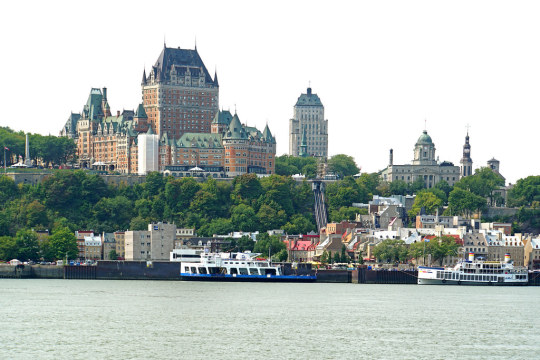
The latest Quebec RSWP draw was held on May 04, 2023 - which targeted 802 potential candidates with academic and employment experience in certain in-demand occupations in Quebec.
Who Was Invited?
Invitations in the May 4th Quebec RSWP draw were issued to 802 candidates that met the following eligibility criterion:
An occupation targeted in the draw, appearing in the National Occupation Classification (NOC) list.
A score equal to or greater than 575 points; or
A valid job offer outside the territory of the Communauté métropolitaine de Montréal.
The decisions to invite candidates to submit an application for the permanent selection made on the basis of invitation criteria were public under section 45 of the Québec Immigration Act. The date and time of extraction from the Arrima bank was May 01, 2023, at 6:30 a.m.
Source: CIC TIMES
0 notes
Text
What Happens if My Express Entry Profile Changes After I Receive My ITA?

Occasionally, a candidate’s Express Entry profile, and therefore their Comprehensive Ranking System (CRS) score, changes after receiving an Invitation to Apply (ITA) for Canadian permanent residence (PR).
If this happens, they must ensure they remain eligible for PR until their electronic Application for Permanent Residence (eAPR) has been submitted.
Express Entry is the name of the system used by Canada’s federal government to cumulatively manage immigration applications from three programs – the Canadian Experience Class (CEC), the Federal Skilled Workers Program (FSWP) and the Federal Skills Trade Program (FSTP). According to Canada’s Immigration Levels Plan for 2023-2025, Canada is aiming to welcome at least 82,000 new immigrants through the Express Entry system in each of the next three years.
To successfully immigrate to Canada through Express Entry, candidates must enter the pool and upload their profile to the Immigration, Refugees and Citizenship Canada (IRCC) website. At this point, they must wait until they receive an ITA. It’s not possible to apply for PR without an ITA. All ITA recipients will have 60 days to submit their eAPR.
Still, a common question among Express Entry candidates is: “what happens if my Express Entry profile changes after I receive my ITA?”
What follows will answer the above question and provide further guidance on ensuring a smooth immigration application process via Express Entry.
Types of Profile Changes and Consequences for an Inaccurate Profile
Following an Express Entry draw, during which a number of candidates are issued ITAs for Canadian PR, it is still possible for an ITA recipient’s profile to change.
Note: Such changes could have notable impacts on one’s CRS score because CRS scores only “lock” once a candidate submits their eAPR (more on that later)

For example, a candidate may receive an ITA and then go through a career/education change, get married, have a birthday or have their language test results expire, all before they submit their eAPR.
If your profile changes, whatever the reason, it is important to maintain an accurate profile with up-to-date information. This is because “false information [or the omission of] important details” is grounds for IRCC to refuse immigration applications, find applicants inadmissible to Canada and/or completely bar applicants from applying to come to Canada for up to five years.
Updating an Express Entry Profile After Receiving an ITA
To avoid the consequences for inaccurate/false profile information, candidates applying to any of the three programs managed under Express Entry can use the following guide to update their Express Entry profile after receiving an ITA.
Essentially, prior to receipt of an ITA, candidates can make changes to their Express Entry profile without explanation. However, this is no longer possible once an ITA is issued because this is the moment when candidates have their profiles officially recorded in the Global Case Management System (GCMS).
Therefore, at this time, applicants must either:
Upload additional supporting documents to verify the change in circumstances (marriage, career change etc.) and ensure continuing profile accuracy or
Send a letter of explanation (LOE) to the government when it is not possible to gather the required supporting documents
An LOE allows applicants to explain that, although they attempted to gather all required documents within the 60-day time frame (before their ITA expired), they were unable to do so.
Note: LOEs are assessed individually on a case-by-case basis and approved or denied at the individual discretion of the reviewing immigration officer
The impact of profile changes on a candidate’s CRS score
Another impact of post-ITA profile changes is that they can alter a candidate’s CRS score, which can effect an individual’s chances of receiving an ITA in an upcoming Express Entry draw.
A candidate’s CRS score can go up or down in a number of ways based on different elements of their profile. For instance, those who obtain a valid job offer or increase their language test scores/education/relevant work experience on their profile will earn more points and subsequently improve their chances of being invited to apply for Canadian permanent residence.
Profile Changes and Eligibility for Canadian Permanent Residence
Certain profile changes, even those that occur after receipt of an ITA, can make previously eligible candidates now ineligible for permanent residence Again, this is important because a candidate’s Express Entry profile is not locked until they submit an eAPR to IRCC.
As an example, language test results are valid for two years. If that two-year period ends prior to submitting an eAPR, a candidate would become ineligible for permanent residence in this country. The same would be true if a candidate no longer meets the income requirements outlined by IRCC regarding their proof of funds, which “are altered every year based on 50% of the low-income cut-off totals.”
Managing Profile Changes and Potential Processing Time Delays

Naturally, profile changes at any stage will require that IRCC takes time to reassess a candidate’s eligibility and fit for permanent residence to Canada via Express Entry. Therefore, it is possible that post-ITA profile changes can add to the total processing time of a candidate’s PR application.
Accordingly, it is crucial that Express Entry candidates make every effort to submit required documents and profile updates in a timely manner, as this will help minimize application processing delays that may occur.
Mitigating the Negative Impact of Profile Changes
The key to handling profile changes after receiving an ITA is ensuring that information is updated promptly and that any communication with immigration authorities is done proactively when possible. In other words, if there is ever a situation where an immigration candidate can foresee a change to their profile that requires communication with Canadian immigration officials, they should make every possible effort to inform the proper authorities of the impending change as soon as possible.
The particular steps that an Express Entry candidate can take to update their profile of any changes that occur after receiving an ITA are detailed above.
Beyond this, it may be worthwhile to seek the professional advice or assistance of a certified Canadian immigration lawyer.
An experienced immigration lawyer can:
Help immigration candidates fully and accurately complete required forms and applications
Communicate with the Canadian government on behalf of the applicant
Use their expertise to ensure crucial mistakes during the immigration process are avoided
Source: CIC NEWS
0 notes
Text
Australia’s Post-pandemic Surge in Net Overseas Migration Temporary, Federal Budget Predicts

Australia’s surge in net overseas migration, forecast to be 400,000 in 2022–23, is a catchup from the pandemic and is expected to be temporary, the budget papers reveal.
The forecast for 2024–25 is 260,000, broadly in line with the long-term historical average of 235,000.
The budget papers say: “The pandemic resulted in the first net outflow of overseas migration from Australia since World War II. The rebound in temporary migration following the reopening of Australia’s international borders was initially slow but has recently started to recover at a faster rate.
“This has resulted in an upgrade in the forecast level of population, even though the total number of temporary migrants arriving in Australia is not expected to make up for the loss in migration during the pandemic for some time.
Population growth is now expected to be 2% in 2022–23 and 1.7% in 2023–24, up from the forecast of 1.4% for both years in the October budget.
Most of the increase is attributed to the return of overseas students, skilled temporary visa holders and working holidaymakers.
As well as new students starting their courses, those who were in the second and third years of their study and who were studying online have arrived, boosting the numbers, Treasury says.
The strong economy and changes to temporary visa eligibility have also added to arrivals.
The level of departures – the other side of net migration numbers – will take more time to return to normal because of the low number of arrivals during the pandemic, Treasury says.
The elevated forecast for net overseas migration in 2023–24 of 315,000 is largely driven by fewer temporary migrants departing Australia than usual, rather than a greater number of people arriving, it says.
So What Does This Mean for Australia’s Population Forecasts?

Even with this stronger near-term outlook, total net overseas migration is not expected to catch up to the level forecast before the pandemic until 2029–30.
The country’s population is expected to be 750,000 people (2.5%) smaller in June 2031 compared with pre-pandemic forecasts. The decline in the birthrate is accounted for in this figure.
The budget also included further details of the streamlined skilled migration program, which was announced by the home affairs minister, Clare O’Neil, in April.
The government will provide an extra two years of post-study work rights for temporary graduate visa holders with selected degrees, which will improve the pipeline of skilled labour in key sectors, the budget papers say.
As previously announced, the temporary skilled migration income threshold will increase from $53,000 to $70,000 from 1 July 2023 to ensure settings are better targeted towards truly skilled workers.
The budget also allocates $50m over four years from 2023–24 for additional enforcement and compliance activities to protect migrant workers, after unions raised concerns about exploitation.
A range of visa fees will increase above the usual CPI increase, yielding $655m over five years in extra revenue.
Most will increase by 6%, but business, innovation and investment visas will increase by an additional 40% and select visitor and temporary visas will increase by an additional 15 percentage points from 1 July 2023.
Pacific Island visas are not affected.
Source: The Guardian
0 notes
Text
Is Canada Heading for a ‘Jobful Recession’? What the Latest Data Shows
Continued growth in Canada’s labour market might see more Canadians hold onto jobs even as the economy dips into a possible recession, according to a read of the latest employment data released Friday.

Statistics Canada says the country’s employers added 41,000 jobs in April as the unemployment rate held at 5.0 per cent for the fifth consecutive month, just above record lows.
A gain of more than 48,000 part-time positions offset a decline of roughly 6,000 full-time jobs last month. StatCan noted this was the first meaningful uptick in part-time employment since October 2022.
It was mostly men 25 and older landing jobs last month (up 34,000), with hiring strongest in Ontario (up 33,000), according to StatCan. The wholesale and retail trade (up 24,000) as well as the warehousing and transportation industries (up 17,000) saw the biggest jumps in employment.
Average hourly wages rose 5.2 per cent in April, topping the most recent inflation data that saw a 4.3 per cent annual increase in March.
The latest jobs figures once again surprised the consensus of economists who had widely expected growth of about 20,000 jobs in April.
Stephen Brown, deputy chief North America economist with Capital Economics, tells Global News that behind the headline numbers, there were signs of “softness,” such as the drop in full-time work.
Much of the employment growth is being fuelled by strong immigration levels, which Brown says has been helping to drive down vacancies for employers while keeping the unemployment rate steady.
The Bank of Canada’s aggressive rate hikes are expected to filter through to the labour market in the coming months, which could lead to a rise in unemployment.
But Brown says growth in part-time work could see overall employment levels hold steady even as the economy slows.
The result could be something of a “jobful recession,” he says, whereby Canadians hold onto lower paying jobs even as the economy contracts for a few quarters.
“This is almost this type of situation where it’s going to look like a recession in the statistics if we have one, but it won’t necessarily feel like a recession,” he says.
American employers added a healthy 253,000 positions in April, evidence of a labour market that still shows surprising strength.
The unemployment rate dipped to 3.4 per cent, matching a 54-year low, the U.S. Labor Department said Friday. But the jobless rate fell in part because 43,000 people left the labor force, the first drop since November, and were no longer counted as unemployed.
How Will the Bank of Canada React?
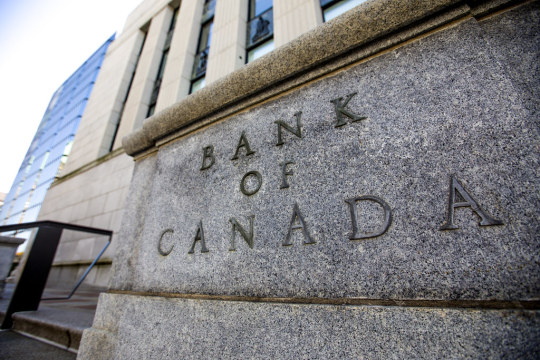
The Bank of Canada has warned that a tight labour market with annual wages rising more than five per cent is not consistent with getting inflation back to its two per cent target, unless it comes with an associated rise in productivity.
The central bank is currently on pause from its aggressive interest rate hikes, but has warned it will be ready to raise rates again if economic data suggests inflation is not cooling according to its forecast. Annual inflation came in at 4.3 per cent in March and the Bank of Canada expects it to hit three per cent this summer.
Governor Tiff Macklem warned again in a speech on Thursday that while price pressures are cooling sharply, the path from three per cent inflation back to the Bank of Canada’s two per cent target might be particularly difficult given the tightness of the labour market.
TD Bank senior economist James Orlando wrote in a note to clients on Friday that strong immigration over the past year will allow the Bank of Canada, which will deliver its next interest rate decision June 7, to remain on hold despite continued jobs growth.
“The inflow of new Canadians is changing the calculus on what a standard jobs report looks like,” he wrote.
“This means that the ‘surprise’ employment report isn’t adding the same labour market tightness as it would have in the past.”
But BMO chief economist Doug Porter said Friday that while the job numbers might not be as strong as the headline figures suggest, given the boost from immigration and the part-time nature of the growth, the labour market “is simply not showing any signs of strain whatsoever.”
“If this persists through the spring, the Bank of Canada may yet be forced to rethink its rate pause, especially with the housing market showing signs of reviving,” he wrote in a client note.
After the jobs report came out, markets priced in a slightly higher chance of a 25-basis-point hike from the Bank of Canada before July, according to CIBC Economics.
Brown told Global News that weakness in the professional services and information technology sectors — two sectors that tend to contribute to strong wage growth — suggest that wage pressure might start to ease in the second half of the year, allowing the Bank of Canada some hope that it can remain on pause for now while its rate hikes to-date take hold in the economy.
“I don’t think the bank will be too concerned just yet, but we do need to see some improvement by the end of this quarter for the bank to have some confidence about its wage growth and inflation will start to decline back to two per cent rather than get stuck at, say, three per cent.”
Source: GLOBAL NEWS
0 notes